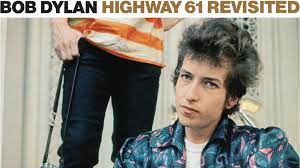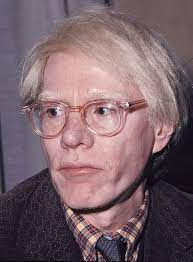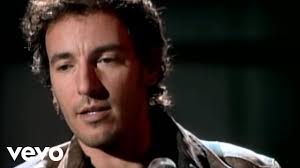TO APOCALYPTIC POST-ACOUSTIC
TO APOCALYPTIC POST-ACOUSTIC
Norman Warwick reads another take on Dylan from Jacob Iotti
Like A Rolling Stone was arguably at one time, and perhaps even now remains, the most recognizable and popular song by the legendary American songwriter and performer Bob Dylan,

Like A Rolling Stone, says Jacob Iotti (left) in a recent edition of American Songwriter. certainly crystalized the artist going electric. With it, the folk lifestyle and image he’d cultivated went in the rear-view mirror.
Dylan first released Like a Rolling Stone on July 20, 1965 (with Gates of Eden as the B-side). It began, as many of Dylan’s songs did in the sixties, with a typewriter and a bit of a vendetta. Dylan wrote many verses (many more than appeared on the six-minute song) for the track earlier that same year after he returned, worn out, from a long tour in the U.K.

After that tour, Dylan, upset with how people were receiving his post-acoustic identity, considered retiring from the music scene. Nevertheless, he persevered. Dylan (right) told Playboy in 1966, “Last spring, I guess I was going to quit singing. I was very drained, and the way things were going, it was a very draggy situation … But Like A Rolling Stone changed it all. I mean it was something that I myself could dig. It’s very tiring having other people tell you how much they dig you if you yourself don’t dig you.”
Dylan told journalist Jules Siegel of the song’s origins, “It was ten pages long. It wasn’t called anything, just a rhythm thing on paper all about my steady hatred directed at some point that was honest. In the end, it wasn’t hatred, it was telling someone something they didn’t know, telling them they were lucky.
“Revenge, that’s a better word. I had never thought of it as a song until one day I was at the piano, and on the paper, it was singing, ‘How does it feel?’ in a slow-motion pace, in the utmost of slow motion.”

To shorten the song for radio play, which even then balked at a six-minute tune, Dylan shortened the lyrics to four verses and a chorus. The track was then recorded as part of the sessions for Dylan’s then-forthcoming LP, Highway 61 Revisited (left).
At first, upon trying to record the track, Dylan reportedly had trouble finding the true center of the song. Then he gave it a rock feel and boom. The track took off in the studio thanks in large part to rookie session player Al Kooper, who improvised the Hammond B2 organ riff that ever since has become a signature flair on the song
At first, Dylan’s record company was unhappy with the recording, both for its length and the electric feel. Dylan, until this point, was beloved for his folk, acoustic tracks, which often were heard as overt protest songs. Now, he was full-on rock ‘n’ roll, which then was not as viable for artists in the mainstream as was folk music.
But the song was, a few weeks later, leaked to a popular music club—Arthur—and the DJs there took to it, ushering in its life as a bona fide single. Soon after, Like a Rolling Stone hit No. 2 on the U.S. Billboard charts and later became the global hit we know it as now.
In an interview with CBC radio in Montreal, Dylan called the manifestation of Like A Rolling Stone a “breakthrough.” He even said that writing it changed his understanding of where and how his career was going, could go.
Dylan told the radio station that he’d written “this long piece of vomit, 20 pages long, and out of it I took ‘Like a Rolling Stone’ and made it as a single. And I’d never written anything like that before and it suddenly came to me that was what I should do … After writing that I wasn’t interested in writing a novel, or a play. I just had too much, I want to write songs.”
Originally, Dylan wrote the song on an upright piano in the key of D flat, which he later changed to C major on the guitar in the recording studio.
While at first—like most revolutionary things—the song wasn’t praised by Columbia, the song has since gone on to be recognized as, perhaps, the most praised song of all time. From Dylan’s direct lyric, How does it feel?, to the many covers, LikeA Rolling Stone”has gone on to become a beloved piece of American art.

At an auction, the lyrics for the song, which has since been covered by Jimi Hendrix, Green Day, and The Wailers right , garnered some $2 million, a world record.
Today, the song remains Dylan’s most successfully commercial release, remaining in the US charts for 12 weeks.

After Like A Rolling Stone had been written, Dylan invited musician Mike Bloomfield (left) to his Woodstock home in Upstate New York for the weekend to play the new material. In an interview, Bloomfield later said, “The first thing I heard was Like A Rolling Stone. I figured he wanted blues, string bending because that’s what I do. He said, ‘Hey, man, I don’t want any of that B.B. King stuff.’ So, OK, I really fell apart. What the heck does he want? We messed around with the song. I played the way that he dug, and he said it was groovy.”
Dylan and company recorded the song on June 15 and 16 in 1965 at Studio A of Columbia Records in New York City. It was produced by Tom Wilson (and was the last song Wilson would produce for Dylan). Along with Bloomfield, Wilson recruited musicians Paul Griffin for piano, Joe Macho Jr. on bass, Bobby Gregg on drums, Bruce Langhorne on tambourine.
In the first recording session, five takes were done, each different from what would later be released, including a version as a waltz. Fans can hear some of those original takes today on the 1991 compilation, The Bootleg Series Volume 1-3 (Rare & Unreleased 1961-1991).

On the second day of recording, Al Kooper joined the session. Then, just 21 years old, Kooper was known as a guitar player. He wasn’t even supposed to play on the session, but when he had a chance, Kooper sat down to take part in the proceedings. As the day continued to transpire, Kooper, who had now ingratiated himself in the session, later told the powers that be that he had a good organ part for the song.
At first, Kooper was scoffed at and was told “no.” But when Dylan heard a playback, which included Kooper’s organ part, he insisted that the organ be turned up, even though Kooper was not a formal organ player. The rest is history. In total, the band did 20 takes and ended up using take No. 4 as the final.
Unlike many of the contemporary hits of the day, Like aA Rolling Stone featured ideas of resentment and challenge in the lyrics, rather than love or joy. It’s about Miss Lonely at first opting for the easy way in life. But later, as she gets older and sees more of what the world is, her path gets harder and harder. Does she have the meaningful life experience to combat this change in perspective?
Maybe not. Dylan sings:
Now you don’t talk so loud
Now you don’t seem so proud
About having to be scrounging your next meal
Yet, even in this hopelessness, there is hope. Having nothing can be freeing.
When you ain’t got nothing, you got nothing to lose
You’re invisible now, you got no secrets to conceal
Magazine magnate Jann Wenner noted, “Everything has been stripped away. You’re on your own, you’re free now … You’re so helpless and now you’ve got nothing left. And you’re invisible—you’ve got no secrets—that’s so liberating. You’ve nothing to fear anymore.”
When asked if Dylan is hard on people in his songs because he wants to “torment them” or “change their lives,” Dylan responded, “I want to needle them.”
Many have speculated as to the identity of the song’s main character, Miss Lonely. While the figure may be made up or an amalgamation of several people, many big names have been suggested as to the identity of the central figure, from model Edie Sedgwick to folk heroin Joan Baez.

Andy Warhol In his book, POPism: The Warhol ’60s, artist Andy Warhol said that people in his circle believed he was referenced in the song. He remembers being told, “Listen to ‘Like a Rolling Stone’—I think you’re the diplomat on the chrome horse, man.”
If true, the allusion is in reference to Warhol’s treatment of Sedgwick, who many believe was abused, perhaps mentally and physically, by the pop artist. Sedgwick and Dylan also were alleged to have a short-lived relationship around 1965—she may have even been in love with him and was shocked when it was discovered that Dylan secretly married Sara Lownds in November of 1965.
Whether the figures in the song are based on real people or not remains a contentious fact. Yet, Dylan said, after his famed motorcycle accident in 1966: “when I used words like ‘he’ and ‘it’ and ‘they,’ and talking about other people, I was really talking about nobody but me.”
Dylan performed the song for the first time live within days of its release in Newport, Rhode Island at the Newport Folk Festival. Famously, many in the audience protested Dylan going electric.
After Dylan released his album, Highway 61 Revisited (which included “Like a Rolling Stone”), in August 1965, he went on tour with the future members of The Band. Later, on May 17, 1966, when Dylan and his backing group played the tune in the Free Trade Hall in Manchester, England, an audience member yelled, “Judas!” Dylan turned to the audience and said, “I don’t believe you… You’re a liar!”
Then he turned to the band and said, “Play it fucking loud!” Since then, the song became a staple at Dylan’s live shows.
The song made such an impact on the American (and global) audience that it in many ways changed the face of popular music.

Said famed rocker Bruce Springsteen, (right) who first heard the song when he was 15-years-old: “The first time I heard Bob Dylan, I was in the car with my mother listening to WMCA, and on came that snare shot that sounded like somebody’d kicked open the door to your mind …
The way that Elvis freed your body, Dylan freed your mind, and showed us that because the music was physical did not mean it was anti-intellect.
“He had the vision and talent to make a pop song so that it contained the whole world. He invented a new way a pop singer could sound, broke through the limitations of what a recording could achieve, and he changed the face of rock’n’roll for ever and ever.”
Paul McCartney remembers listening to the song at John Lennon’s house. Said McCartney of the experience: “It seemed to go on and on forever. It was just beautiful … He showed all of us that it was possible to go a little further.”
Remembered Fank Zappa: “”When I heard ‘Like a Rolling Stone’, I wanted to quit the music business, because I felt: ‘If this wins and it does what it’s supposed to do, I don’t need to do anything else …’ But it didn’t do anything. It sold but nobody responded to it in the way that they should have.”

Said Elvis Costello: “What a shocking thing to live in a world where there was Manfred Mann and the Supremes and Englebert Humperdinck and here comes ‘Like A Rolling Stone’.
Originally, CBS tried to make the record more radio friendly by cutting the song in half and spreading it over both sides of the vinyl. But Dylan fans weren’t having it! They demanded that the full song was place on one side and that radio stations play the song fully in one go. This changed the way popular music was thought of. Now six-minute songs could be pop hits.
Said Rolling Stone magazine, which, in part, took its name from the song: “No other pop song has so thoroughly challenged and transformed the commercial laws and artistic conventions of its time, for all time.”
The legendary guitar player Jimi Hendrix obviously had a fondness for Dylan’s writing. The artist is famous for his cover of Dylan’s “Watchtower.” And he also recorded a live version of “Like a Rolling Stone” with his band the Jimi Hendrix Experience, which you can check out on line.
Said Hendrix of the song: “It made me feel that I wasn’t the only one who’d ever felt so low.”
High praise!




Leave a Reply
Want to join the discussion?Feel free to contribute!